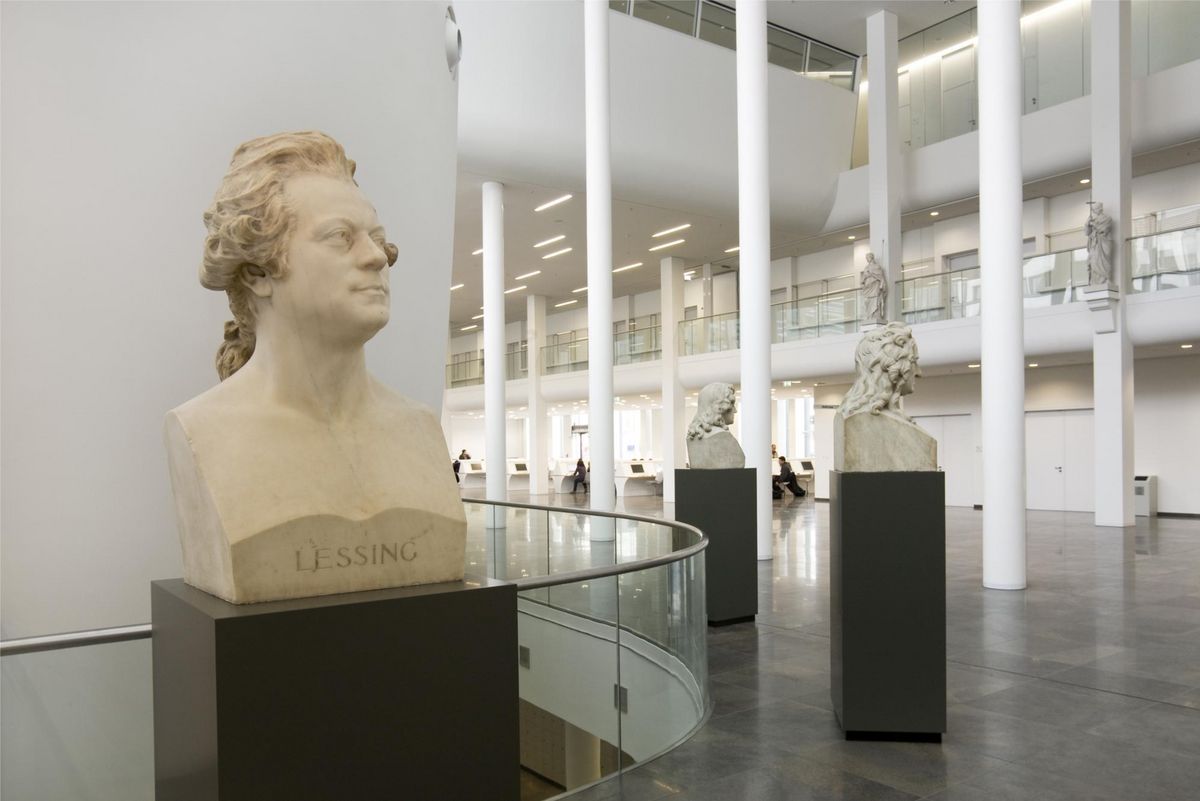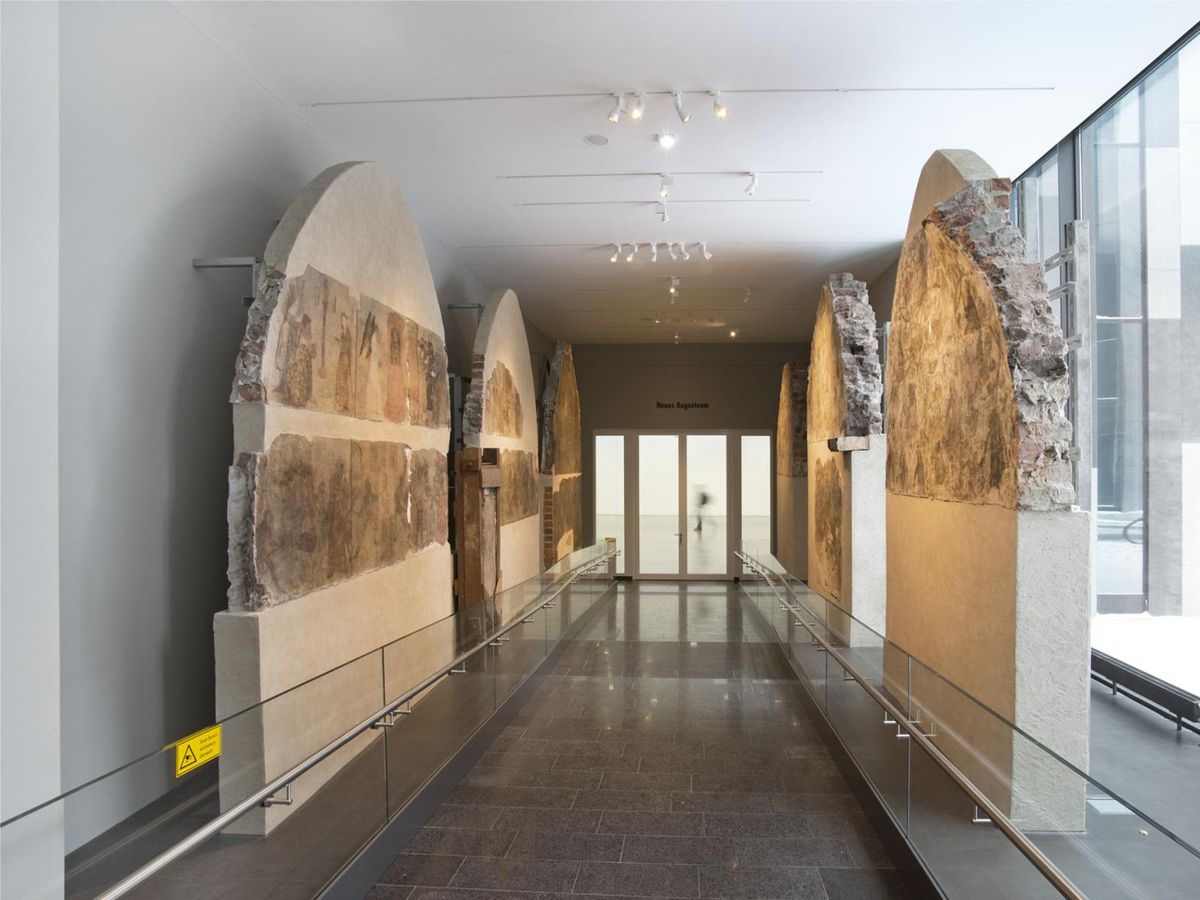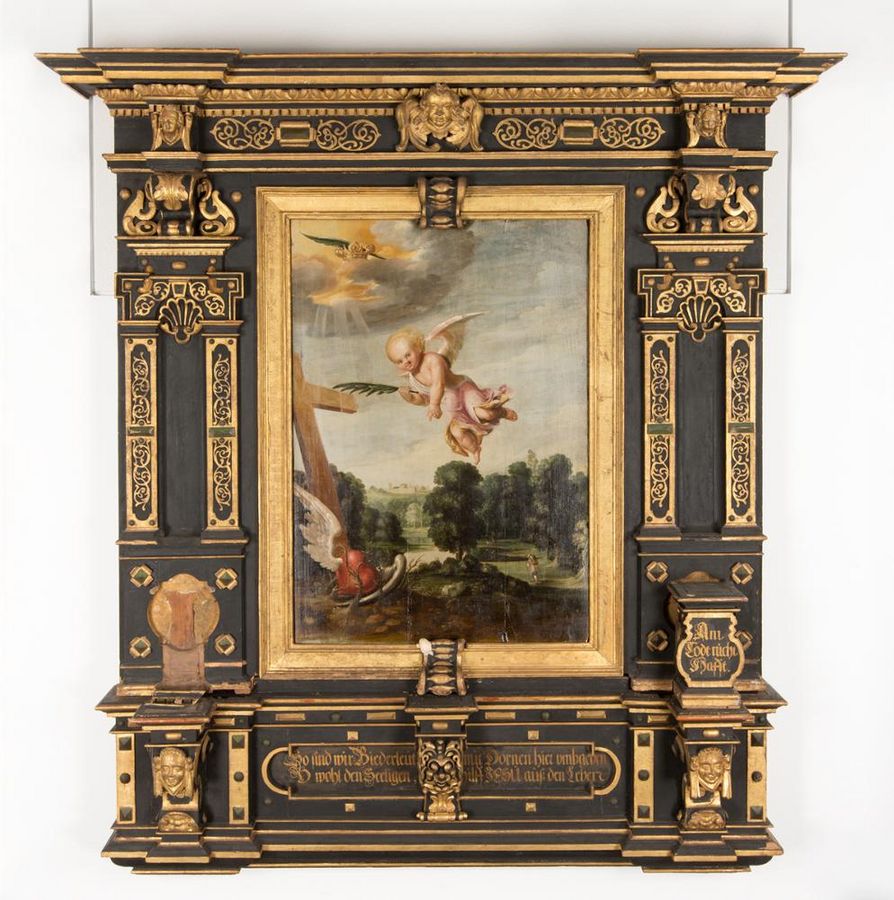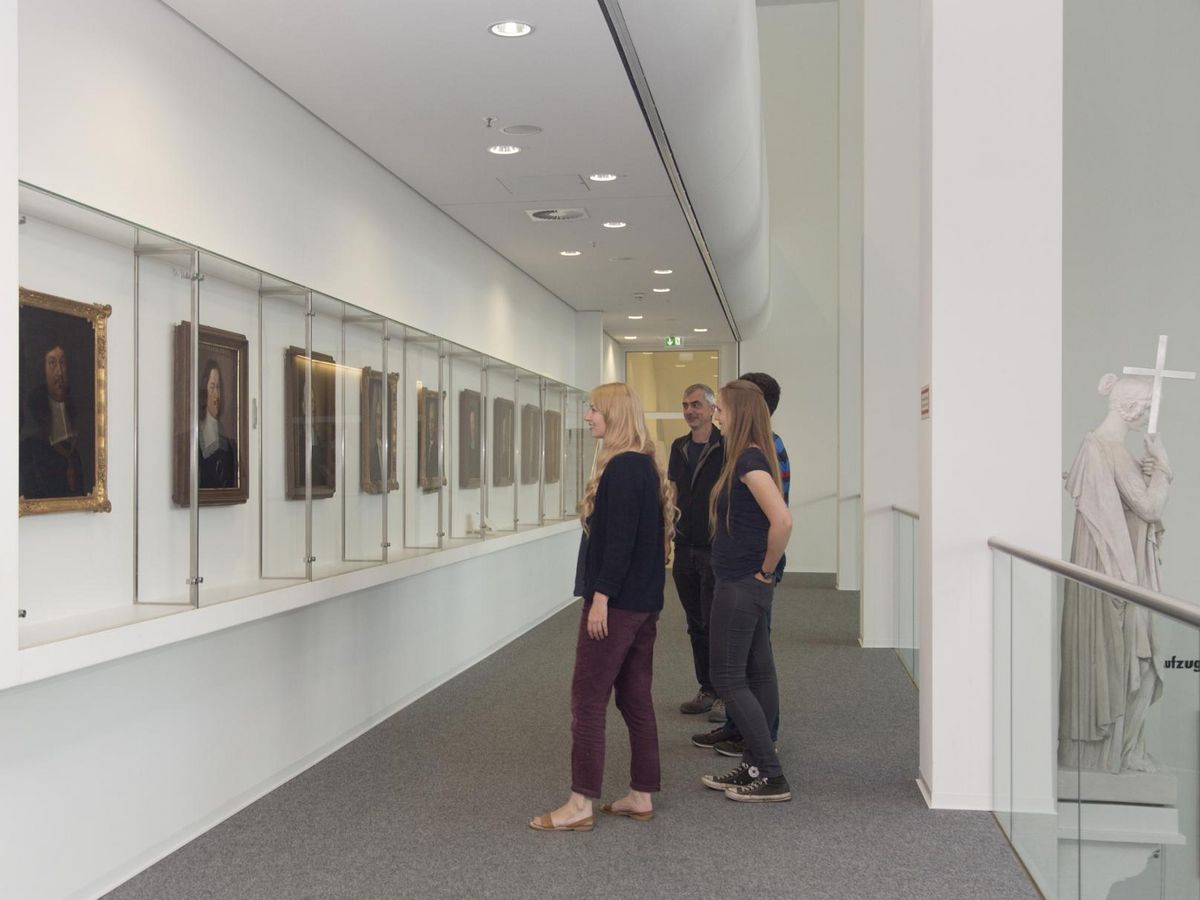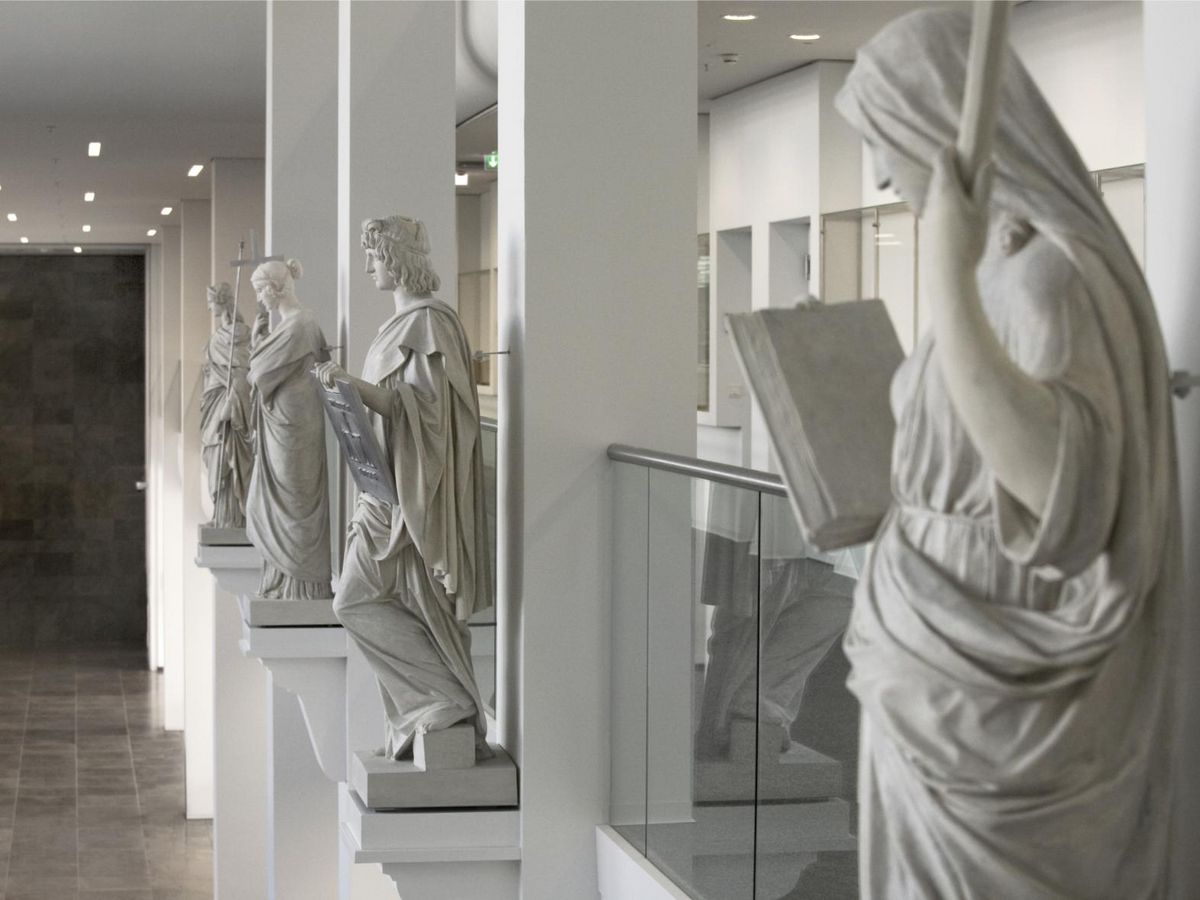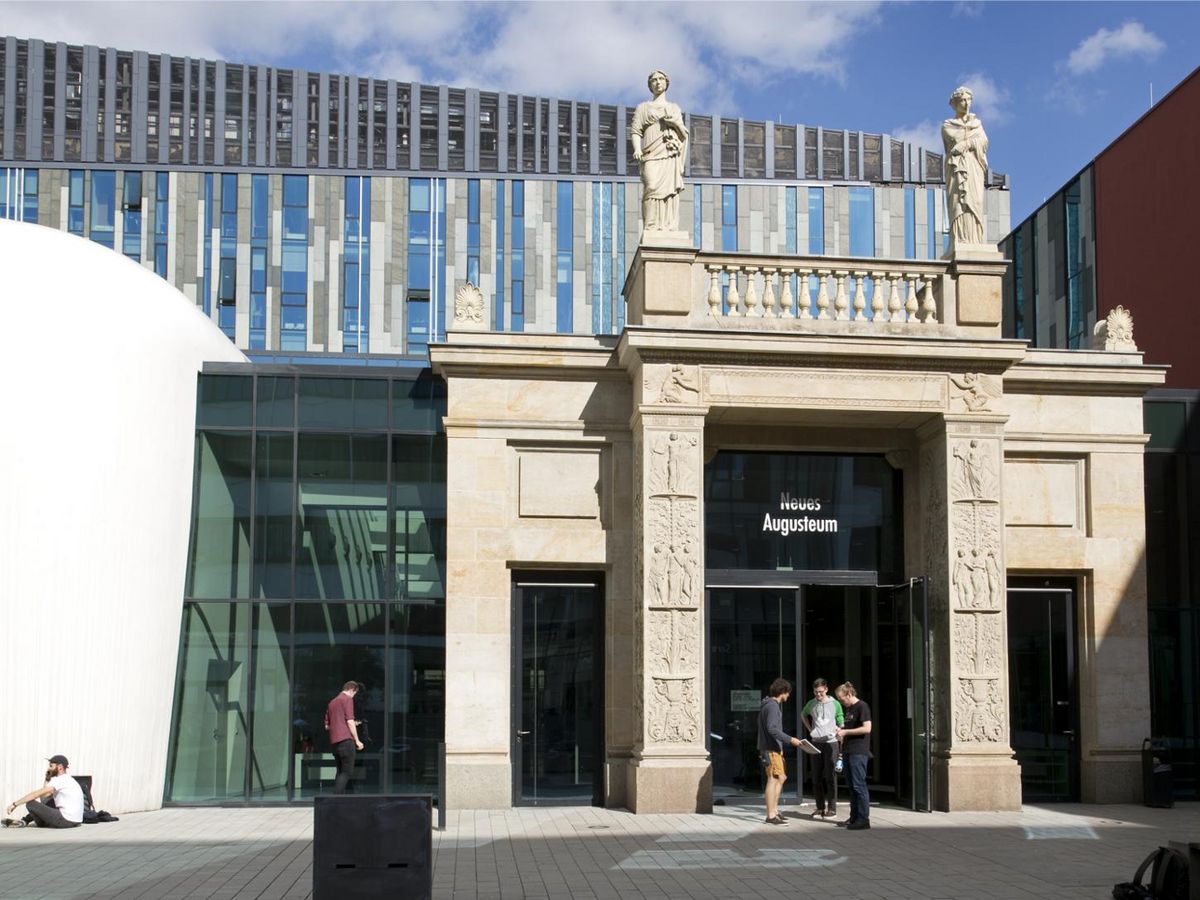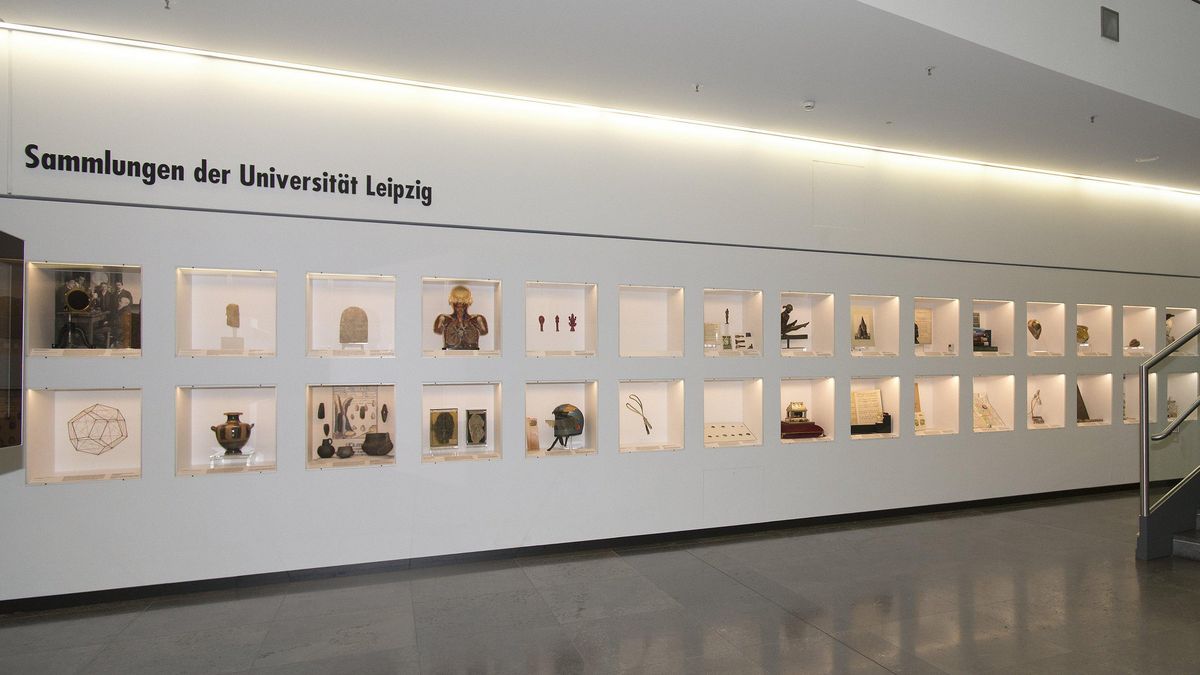On the central campus at Augustusplatz, five commemorative sections provide an insight into different periods of the University’s history through historical works of art. We want to convey the 600-year tradition of our university to visitors to our modern 21st-century university buildings.
Contemporary architecture and historic art: A dialogue
The 600-year history of our university is not evident in its buildings, but can be experienced through the works of art in our collection. The new campus building on Augustusplatz offers a dialogue between contemporary architecture and historical art. It embodies the future-oriented approach of our university against the backdrop of a rich past.
Five coherent commemorative sections demonstrate aspects of the University’s history from the Middle Ages to the 21st century.
Late medieval frescoes of the Dominican monastery
The remains of the Dominican monastery are now on display in a corridor that connects the main building to the lecture theatre building. The murals come from the cloister of a monastery building that later housed the university library. Painted in the 15th and 16th centuries, they depict scenes from the life of the Virgin Mary, the Crucifixion, legends of saints and a Dominican family tree. They are the only medieval figurative murals in Leipzig and the largest cycle of medieval murals in Saxony.
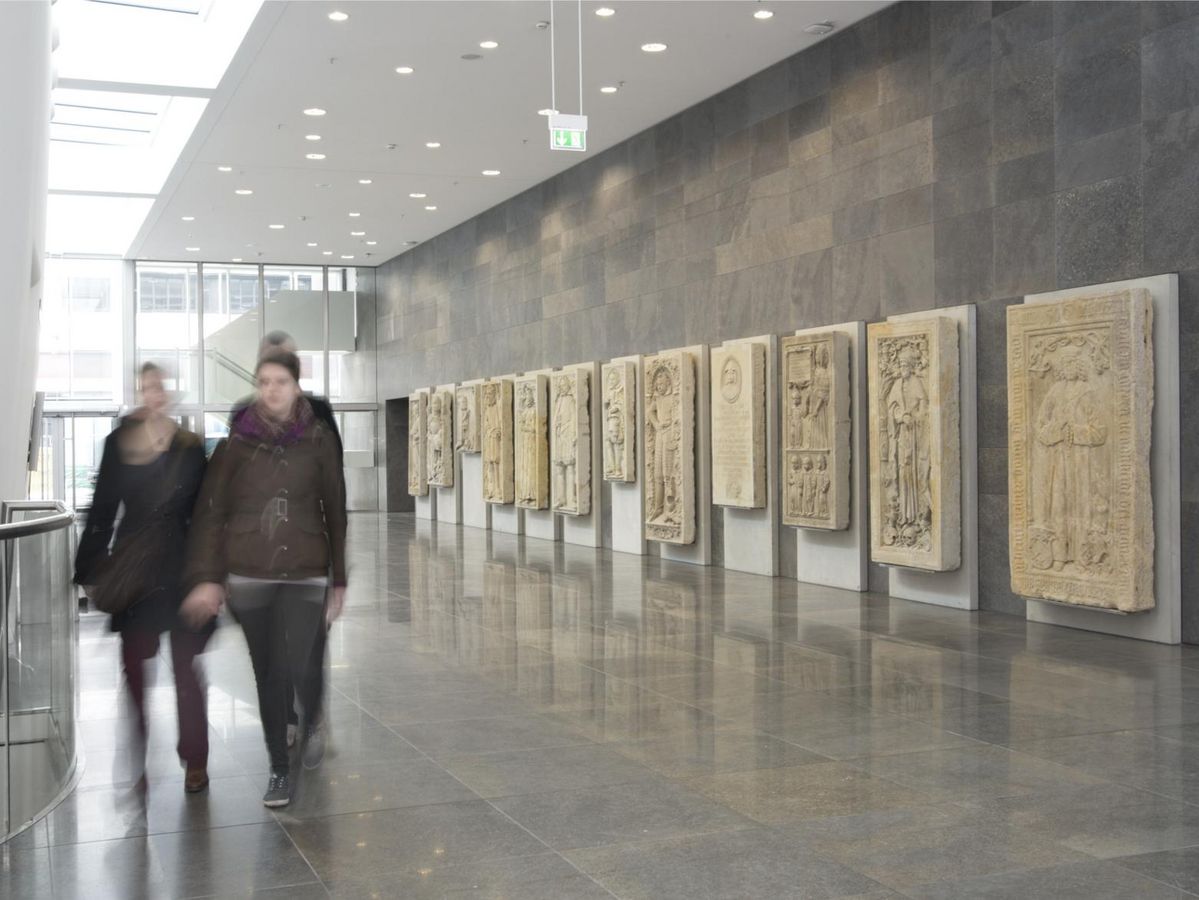
Tomb slabs of University Church St. Paul
Sixteen wall-mounted tomb slabs have been installed on the south wall of the Paulinum in the northern foyer area of the Neues Augusteum. Until the church was demolished in 1968, there was a cloister there, the northern wall of which was adorned by the memorial markers. Already in the time of the Dominicans, the Pauline Church was a coveted burial place for the city’s elite. After the Reformation, members of the University were buried there. The gravestones shed light on touching individual fates or provide insights into the history of the University and the city.
Pauline Altar und Epitaphs
The Paulinum’s devotional room contains works of art that were saved from the University Church of St. Paul shortly before it was demolished in 1968. Selected epitaphs are presented on suspended hanging surfaces: works of art from the Reformation to the Rococo, memorial monuments made of wood, stone and metal, and painted epitaphs. The diverse and high-quality ensemble is a mirror of Leipzig’s city and university history.
The late Gothic Pauline Altar is the most important medieval altarpiece in the city of Leipzig. An Erfurt carving workshop probably created it between 1485 and 1490 on behalf of the Dominican Order. The winged altar depicts scenes from the life of the apostle Paul, the life of Mary and the passion of Christ.
Professors' portraits from the university library
In the gallery on the mezzanine floor of the Neues Augusteum, we show 21 portraits of important professors of the 17th and 18th centuries in air-conditioned display cases. The paintings, created between around 1600 and 1780, were part of a professors’ gallery of the historical University Library in the Mittelpaulinum (in the area of today’s Auditorium maximum). In a standard format of approximately 60 x 50 cm, the sitters are shown in black academic robes as a bust portraits, without hands or attributes, against a neutral, dark background.
Sculptures and building fragments from the old Augusteum in the foyer of the Neues Augusteum
The four regent virtues
Four “regent virtues” by the classicist sculptor Ernst Rietschel (1804–1861) look down from consoles into the foyer. They embody piety, justice, gentleness and wisdom − virtues that were particularly dear to the regent. In 1832, these plaster figures were used as models for a bronze monument in honour of the Saxon King Frederick August I (the Just, 1750−1827). The finished monument can now be seen in front of the State Office for the Preservation of Monuments in Dresden. The plaster models were donated to the University and installed in the assembly hall of the Augusteum, the University’s main building named after the king. After the building was redesigned by the university architect Arved Roßbach in the 1890s, they adorned the balustrade of the spacious Wandelhalle.
Colossal busts: Leibniz, Goethe, Lessing
In front of the Auditorium maximum are three colossal marble busts, some of which come from the auditorium of the historic Augusteum. They represent three of Leipzig University’s most famous students: Gottfried Wilhelm Leibniz studied in Leipzig from 1661 to 1663; his bust was created by the Leipzig sculptor Immanuel A. H. Knaur in 1847 to mark the 200th anniversary of the polymath’s birth. The bust of Gotthold Ephraim Lessing (who studied in Leipzig from 1746 to 1748) was created in 1909 for the 500th anniversary of the founding of the University and was sculpted by Carl Ludwig Seffner. Johann Wolfgang von Goethe began his studies in Leipzig in 1765, but had to return to his hometown of Frankfurt am Main three years later for health reasons. His bust, also by Knaur, was created for the 100th anniversary of his matriculation in 1865.
The Schinkel Gate
The main portal, designed by the famous architect Karl Friedrich Schinkel, is the only remaining original building fragment of the classicist Augusteum. From 1830, the new main building was constructed under the direction of the university architect Albert Geutebrück. However, his designs were revised and corrected by Karl Friedrich Schinkel. Today, the Schinkel Gate forms the courtyard entrance to the main building from the Leibniz Forum. It once again fulfils a representative function, as it was originally designed for the entrance to the University from Augustusplatz. It was executed by the Dresden sculptor Ernst Rietschel.
Socialist Art of Karl Marx University
The monumental mural Working Class and Intelligentsia was created between 1970 and 1973 as a commission for the Karl Marx University. The SED (Socialist Unity Party) commissioned works of art to decorate the inner-city university area, which was to be rebuilt according to socialist ideas. The interpretation of Tübke’s mural is still controversial: on the one hand, he followed the ideological guidelines of the party leadership; on the other, it can also be read as a vision of a free society. As an authentic testimony to the time of its creation, the mural is a good starting point for an examination of the history of our university during the time of the GDR. The mural is on display in the lecture hall building, 2nd floor, opposite lecture hall 9.
Mural by Werner Tübke: Working Class and Intelligentsia
Speech by Professor Frank Zöllner at the vernissage on 30 March 2015
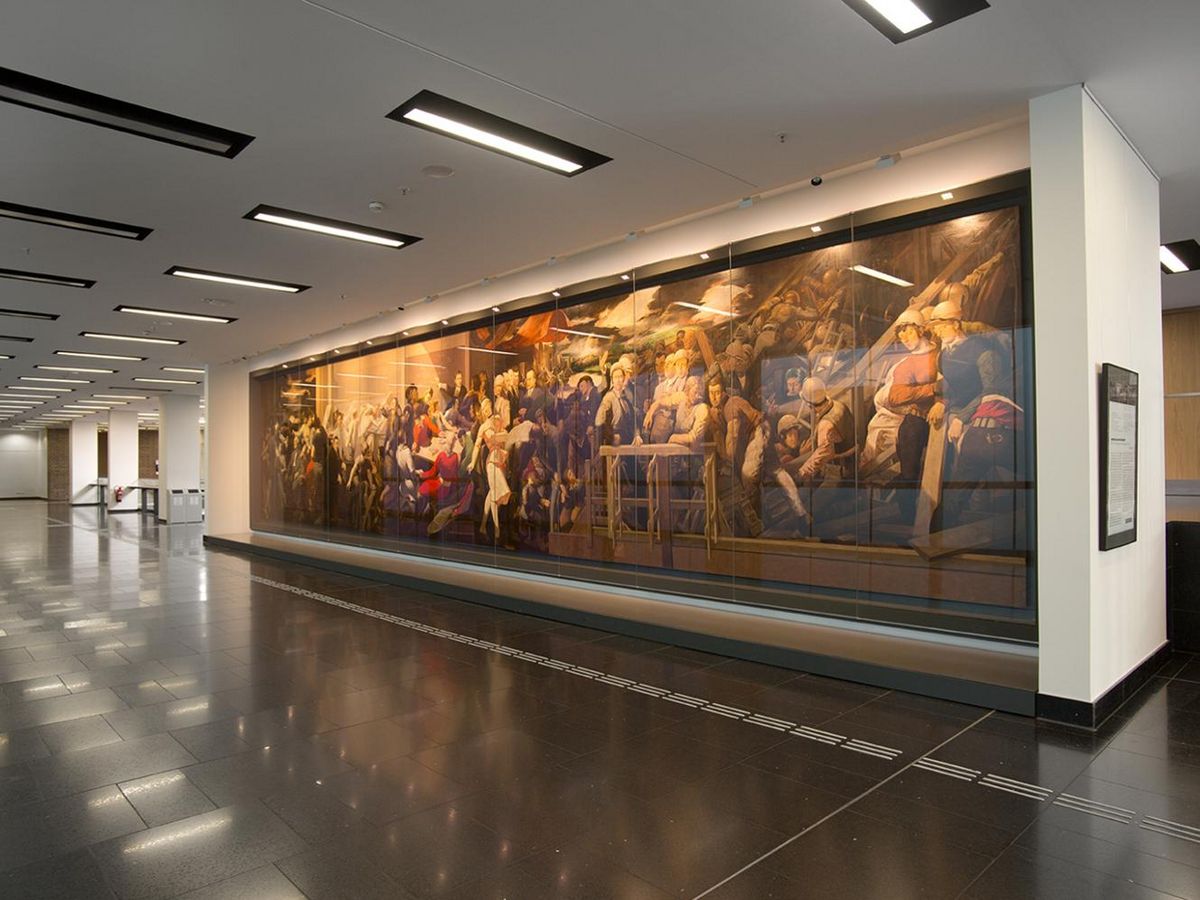
Tübke mural
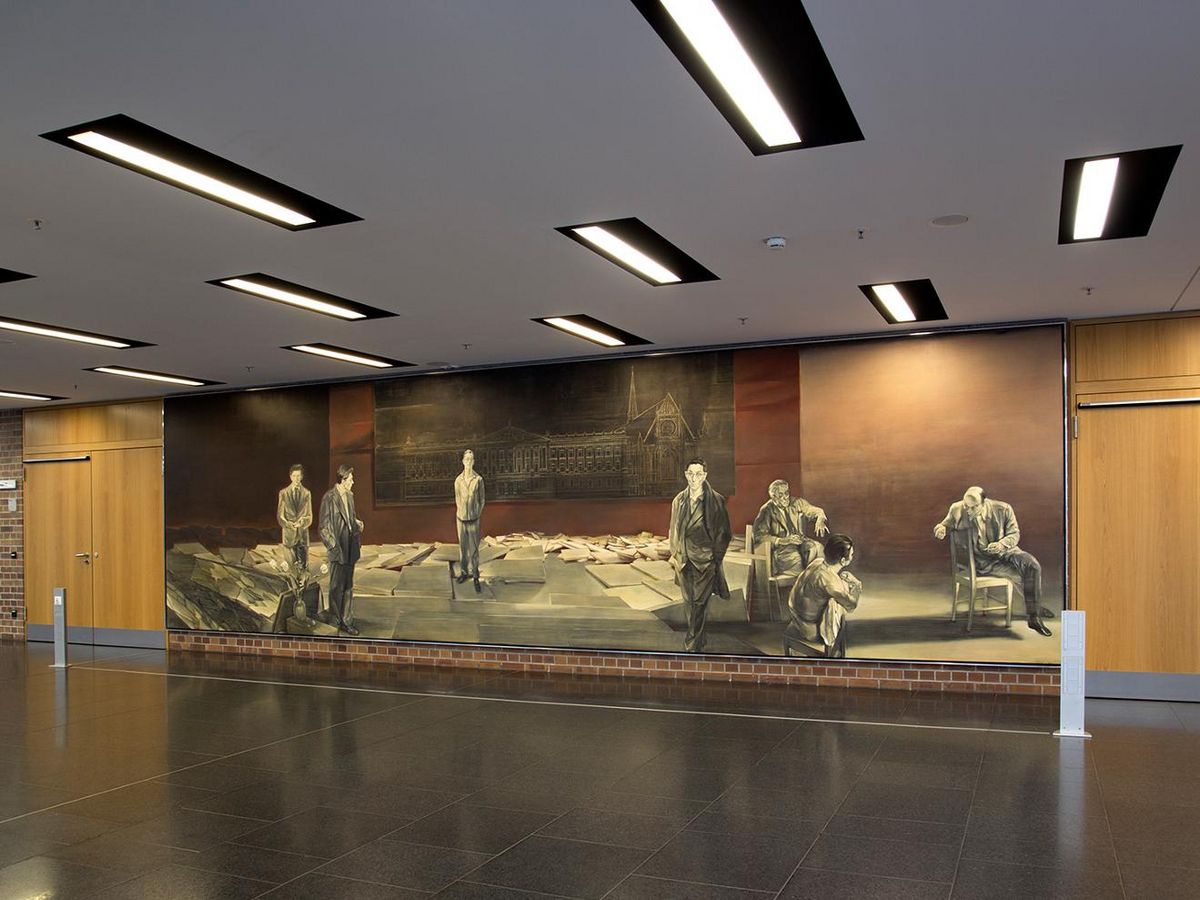
Addressing the history of the GDR in the 21st century: “Aufrecht stehen” by Reinhard Minkewitz
The writer Erich Loest commissioned the Leipzig artist Reinhard Minkewitz to paint “Aufrecht stehen − für Herbert Belter, Ernst Bloch, Werner Ihmels, Hans Mayer, Wolfgang Natonek, Georg-Siegfried Schmutzler”. Loest wanted a painting to commemorate some of the people who had resisted SED policies and their implementation by the university administration during the GDR era. After protracted disputes over funding and installation, the Stiftung Friedliche Revolution took over the project in 2014. On long-term loan to the University, it now adorns the wall in front of lecture hall 3 on the first floor of the lecture hall building. Hanging it in the lecture hall building fulfilled an urgent wish of Erich Loest.
Neues Augusteum showcases diversity of university collections
Under our auspices, display cases have been set up in the Neues Augusteum to present the University’s museums and collections on the Augustusplatz campus centrally and together. The 30 display cases illustrate the diversity of the University’s collections: from archaeology to art, from anatomy and pathology to zoology teaching collections, the humanities and natural sciences are each presented here with a selected object and an informative text. The display was designed and equipped as part of a project seminar in the summer semester of 2017, organised by the Institute of Art History and the Kustodie.
Reminiscent of a historical cabinet of art and curiosities, the display combines art objects, photographs, books, coins and archaeological finds with scientific or medical specimens, minerals or mathematical models. The rich collections are the foundation of science and are an important resource for research, teaching and educating the public. The display cases in the basement of the Neues Augusteum invite visitors to take a closer look at the museums and collections.
Museums and collections at Leipzig University
Gesellschaft für Universitätssammlungen e.V.
Koordinierungsstelle für wissenschaftliche Universitätssammlungen in Deutschland
